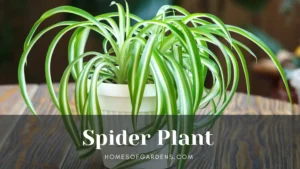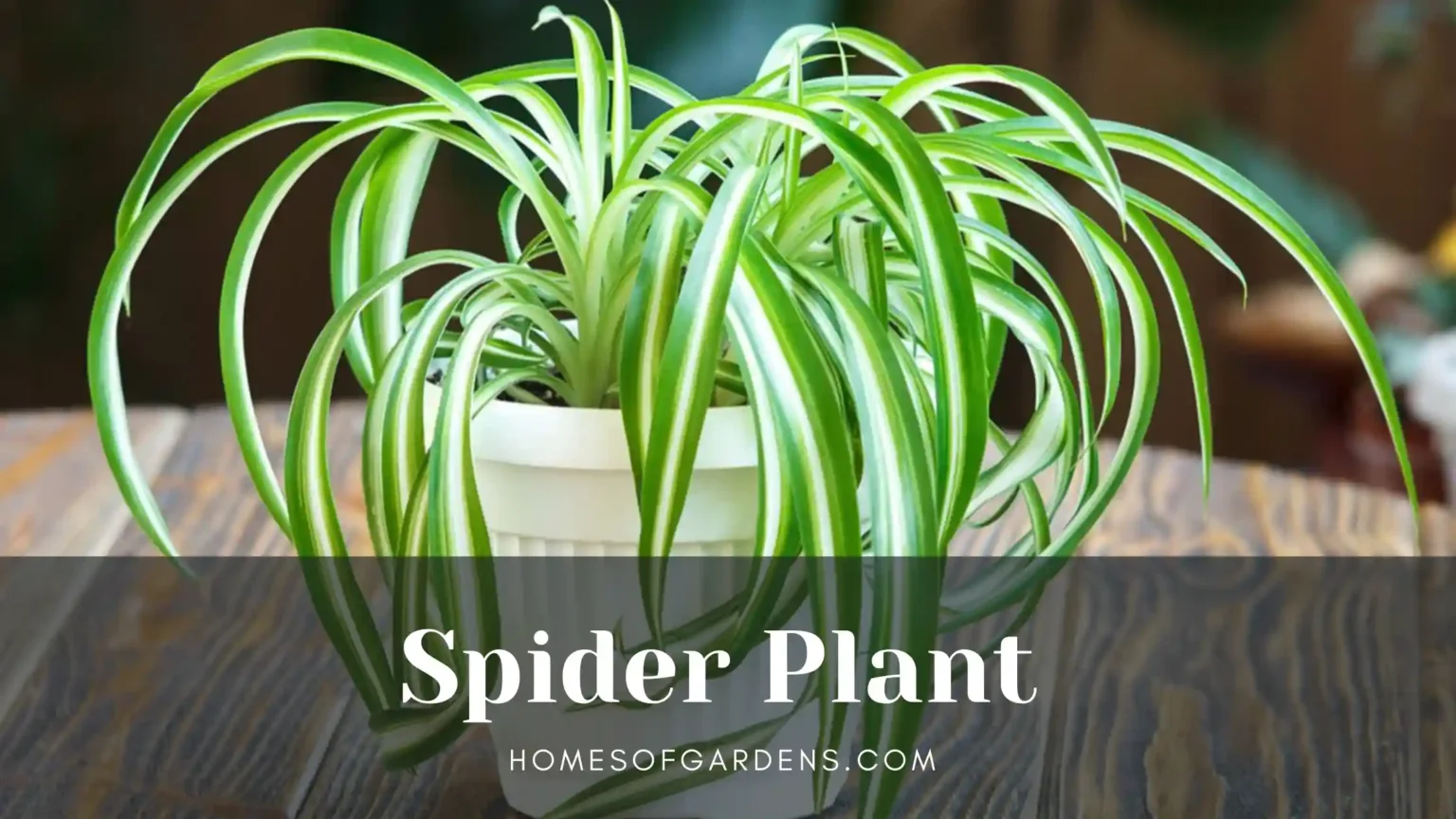There’s a reason why the spider plant has been a fixture on window sills for ages. With their slender, arching leaves and the fervent creation of tiny plantlets, these beautiful beauties add an energy to any room and require almost nothing in exchange. I’ll never forget the first time I saw a spider plant, a desperate clearance rack that turned into a lush fountain of greenery within a matter of months and eventually gifted me with a plethora of “spiderettes” I could barely give them the entire collection away.
The Irresistible Charm of Spider plant
Spider plant has a sort of a quiet magic. In contrast to more fussy specimens that target our lack of attention, these plants seem to be celebrating life every moment. Their leaves that resemble ribbons cascade exuberant abandon, and their hanging offspring dance through the stems of their wiry branches like mobile sculptures that live. NASA’s Clean Air Study confirmed what our grandmothers had known – that they are among nature’s most effective air purifiers in a quiet way, removing formaldehyde and the xylene that we breathe in our homes.
The thing that makes the spider plant unique is its willingness to share. One healthy plant could produce numerous plantlets every year, providing numerous opportunities to share the pleasures of growing. I’ve observed these plants flourish in dorms at college offices, cubicles in office spaces, and in sun-deprived apartments in which other plants would languish. Their ability to adapt is legendary. I once saved an abandoned spider plant in an empty apartment pale and bone dry and regenerated with shocking force after just a few days of maintenance.
Light: A Flexible Relationship
The spider plant expresses its preferences for light with astonishing clarity. In my kitchen window that faces south my ‘Vittatum’ grows golden hues on its leaves, whereas the similar variety that I have in my bathroom that faces north remains more vibrant and deep green. They thrive in bright indirect sunlight, but they can withstand lower lighting conditions, though they may grow slower and the variegation could disappear.
The most interesting transformation occurs when the spider plant gets optimal light. The white stripes of the variegated species become more prominent and the plant will begin creating its signature offsets with comical excitement. My plants have been rotated often to ensure a uniform growth because they’ll lean towards their light source when given the possibility.
Watering: The Rhythm of Abundance
In the event that spiders had a motto perhaps it would have been “moderation in all things.” They like that their soil dries in between waterings. However, they beg to differ if left dry for too long. I water mine whenever the soil’s top inch is wet to touch. Usually every week in summer, and biweekly during winter. The leaves speak for themselves: a slightly limp-looking foliage means the plant is thirsty. Yellowing leaves are often a sign of overwatering.
What really surprised me was discovering how sensitive the spider plant is to fluoride present in tap water. After months of spooky brown tips on my leaves I changed to water that was filtered and the results were astonishing. Today, I either collect rainwater or let tap water rest for a night before watering. My plants express their gratitude by displaying flawless leaves.
Soil and Roots: Room to Grow
The spider plant forms an amazing root system, with long, tubular roots that store nutrients and water. A well-drained potting mix with some perlite adds the perfect balance between Aeration and moisture retention. The plants are actually happy to be a little root-bound, but if roots begin to emerge out of drainage holes or their growth slows then it’s time to change the potting mix.
First time that I repotted an old spider plant I was awestruck by the thick tangle of white, creamy roots that completely covered the pot. Giving it new soil and a larger pot led to the growth of a new plant and offsets. The perfect time of year is spring to begin this process as the natural growth cycle of plants begins.
Temperature and Humidity: Comfortable Flexibility
The spider plant doesn’t care about its surroundings. They do best in common home temperatures ranging from 60 to 80 degrees (15-27degC) and can adapt to the average levels of humidity. But, I’ve observed that mine grow more vigorously when I use an air humidifier in the winter months, with their tips remaining perfectly green, rather than getting the typical brown tips that plague indoor plants.
They won’t take extreme cold breezes or abrupt temperatures that fluctuate. I learned this when a favorite spider plant with a variegated design near an open winter window that was frequently used started dropping leaves. Moving it to a secured place stopped the loss of leaves nearly immediately.
Nutrition: Gentle Nourishment
In the midst of their busy growing season (spring through autumn) spider plants can benefit from gentle treatments every 4-6 weeks, using a water-soluble, balanced fertilizer that is diluted up to a half-force. I’ve observed that fertilizing too much leads to excessive growth at the expense of these beautiful plantlets, so I prefer to stay towards the underfeeding side.
One interesting thing I’ve noticed is that plants that create many offsets may benefit from more frequent feedings because the energy requirement of bringing forth many babies is huge. When winter comes around, I allow my plants a break from fertilizing, which allows them to continue with their natural rhythms.
The Joy of Propagation
Few plants make propagation as easy and rewarding as spider plants. Those dangling offsets are essentially pre-packaged new plants just waiting to be potted up. I’ve had great success with two methods:
- Letting the baby plant develop while still attached to the mother plant (I sometimes rest the offset on a small pot of soil while it’s still connected)
- Sniping the plantlet once it has developed small aerial roots and potting it directly
The first method seems to produce slightly stronger plants initially, but both are remarkably successful. I’ve given away dozens of these offspring over the years, each one carrying the story of its parent plant.
Troubleshooting with Patience
Even the easiest plants occasionally face challenges. Spider plant communicate their distress clearly if we learn to read their signals:
- Brown leaf tips: Often indicate fluoride sensitivity or inconsistent watering
- Pale leaves: Typically suggest too much direct sun or need for fertilization
- Lack of offsets: Usually means the plant needs more light or is too young
Pests are rare but possible. I’ve occasionally dealt with spider mites (ironically), which a gentle shower and neem oil application easily resolves. The key is not to panic, the spider plant is remarkably resilient when given appropriate care.
Designing with Spider Plant
The range that spider plant plants can bring to interior designs is amazing. A hanging basket lets their plantlets and foliage to cascade in a dramatic way, and the tall pedestal transforms them into a living fountain of greenery. I’ve used them to create the form of terrariums (the smaller ones are ideal for this) or as centerpieces for table settings and even arranged along walls-mounted tracks.
Their casual, jolly nature makes them suitable for spaces that are casual, but their beautiful variety of colors lets them blend into more formal designs as well. I enjoy mixing them with plants with different textures. The contrast of things like the snake or rubber plant is a great way to create visual interest.
The Generous Nature of Spider Plant
The thing that continues to impress me about the plants is their generosity. One healthy plant could produce numerous offspring every year, providing numerous opportunities to share the happiness of growing. I’ve gifted spider plants to my neighbors as well as coworkers and even my mailman. There’s something wonderful about passing on plants that you are confident will flourish with little maintenance, and could last for years.
My spider plant from the beginning which is now 7 years old is now an important family heirloom. The descendants of it live in three states of homes with each having a unique link to the plant that was the one to start it all. In this day and age of disposable items, there’s immense satisfaction in caring for something that gets better as time passes.
Final Thoughts
The spider plant shows us that some of the most satisfying houseplants don’t have to be the most common or the most demanding. Their sluggish resilience, hospitable nature, and cheerful disposition are ideal companions for novice and seasoned plant lovers. When you become acquainted with your spider plant you’ll become aware of its requirements – and find out why these natural beauties have been adored for a long time.
With their swaying leaves and dancing plantlets we are able to revel in the simple pleasures of life – development and renewal, as well as the pleasure in sharing a beautiful thing with other people.

